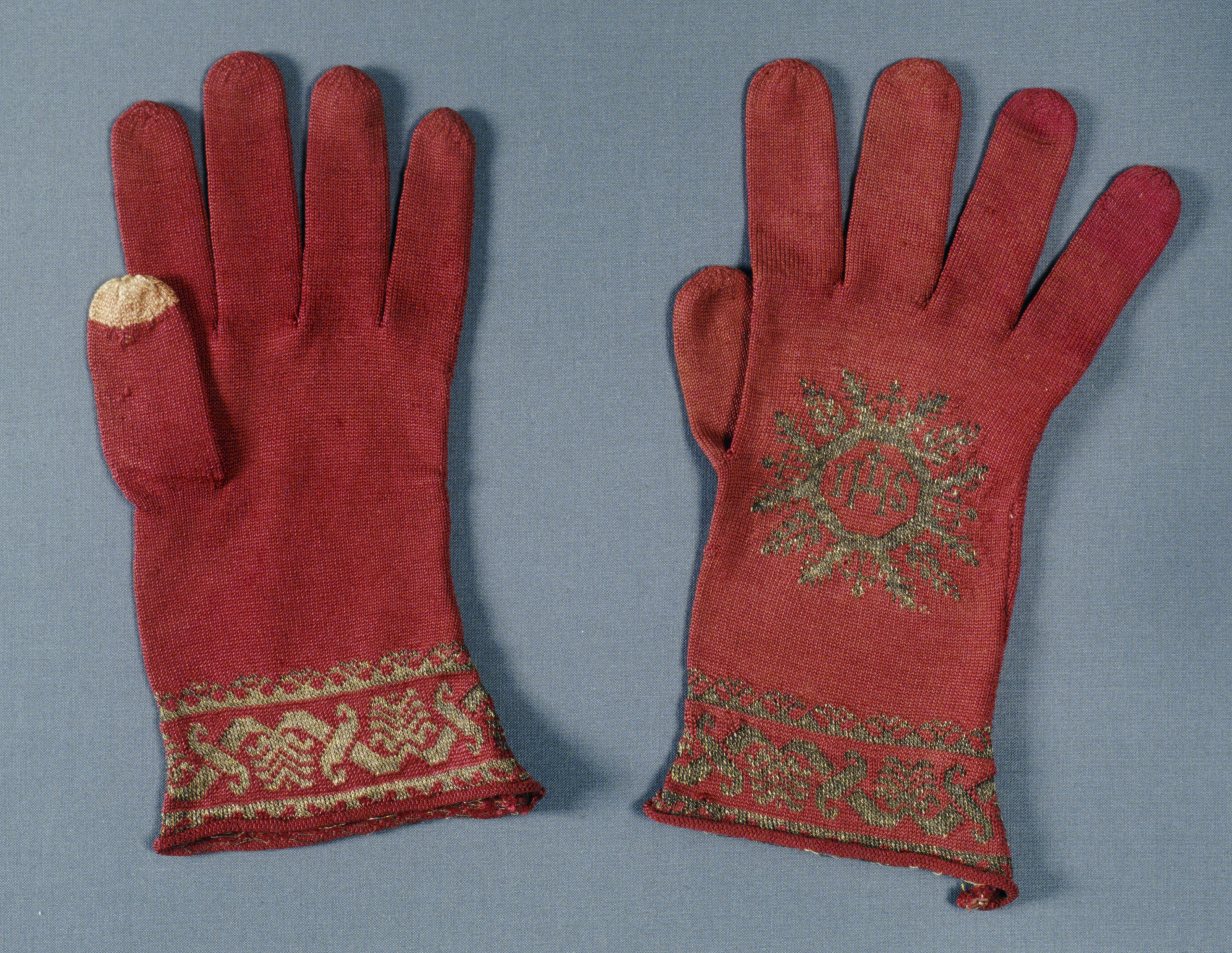
Title: Liturgical gloves
Place: Italy
Date: Seventeenth century
Medium & technique: Hand-knitted silk with silver thread details
Dimensions: 254 x 127 mm
Themes: Bodies – Inside & Outside
Collection: (c) the Whitworth, The University of Manchester, T.8240
Liturgical gloves were bestowed on bishops and cardinals during ordination ceremonies, along with the other vestments appropriate to their rank, and were then worn during the carefully orchestrated ceremonial of the mass and during processions. From the late sixteenth century such gloves were made in the liturgical colours established by Pope Pius V (d. 1572). Red could be worn, for example, during the feasts of Christ’s Passion. A number of authors associated liturgical gloves with clerical virtues such as modesty and purity but the richness of vestments could lead to criticism of the Church. This was rebuffed with the argument that the clergy needed to dress in a way that reflected the importance of their work and reminded the congregation of the glories of the heavenly world. Read more about this object.
Cordelia Warr, University of Manchester
Further Reading:
Elizabeth Coatesworth and Gale R. Owen-Crocker, Clothing the Past: Surviving Garments from Early Medieval to Early Modern Western Europe (Leiden: Brill, 2018).
Cordelia Warr, ‘In persona Christi: Liturgical Gloves and the Construction of Public Religious Identity,’ Bulletin of the John Rylands Library 95/2, (2019), 135-156.
Annemarieke Willemsen, ‘Taking up the Glove: Finds, Uses and Meanings of Gloves, Mittens and Gauntlets in Western Europe, c. AD 1300–1700 – The Geoff Egan Memorial Lecture 2013,’ Post-Medieval Archaeology 49/1 (2015), 1-36.